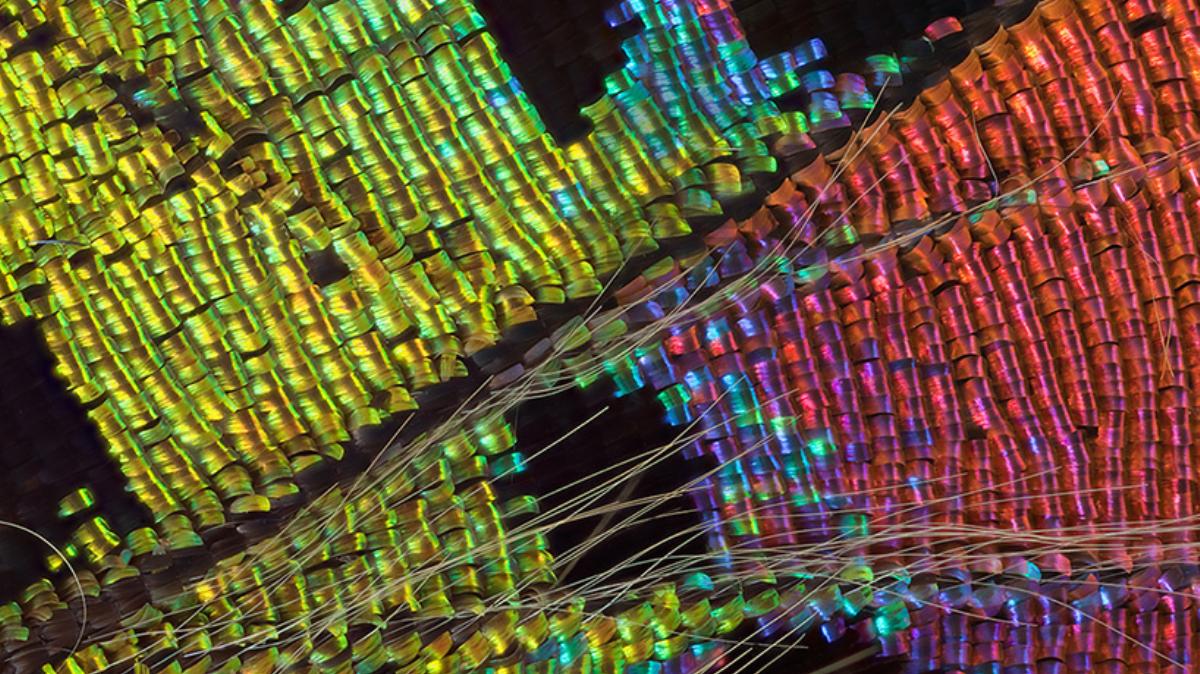Sublime Macro Photographs Of Butterfly Wings

These amazing macro photographs of butterfly wings are sure to change the way you look at butterflies. Photographer Linden Gledhill captures nature's astonishing beauty with a macro focusing rail. Gledhill is a biochemist-turned-photographer who was featured in the documentary on the bio-art produced for Jon Hopkins' latest album, Immunity. Gledhill focused his photography on the wings of Hesperioidea, Lepidoptera Papilionoidea, and Hedylidae. In other words, the photographer took macro photographs of butterflies, moths, and skippers. The photos look like colorful paintings, and it's hard to imagine that they are butterfly wings. As if these special critters couldn't get any more beautiful, check out the stunning images Gledhill created with an automated macro focusing rail. An automated macro focusing rail is highly recommended if macro photography is something you are interested in. A macro focusing rail helps to make incremental movements of your camera by using a gear mechanism that can be turned between each exposure. Without a macro focus rail, it's all too easy to miss a slice from your focus stack, and you'll be left with a small area in your image that is out of focus. A macro rail gives you a way to repeat things, and a way to calculate your movements precisely.
A butterfly has four wings, with two forewings, and two hindwings. These wings are attached to the second and third thoracic segments of a butterfly. Strong muscles in the butterfly's thorax help to move the wings up and down in a figure-eight pattern when they fly. When the fully-grown adult butterfly comes out of its pupa, its delicate wings are crinkled, uninflated and wet. The new butterfly hangs upside-down and pumps blood into the wings to help inflate them. The new butterfly must then wait for its wings to dry before it can fly. When the fragile wings of the butterfly fray or are torn, they do not repair themselves.
The macro photos show how beautifully colored some butterfly wings can be. And while many butterflies have colorful wings, there are just as many that have drably colored wings. And while many butterflies have colorful wings there are just as many who have drab, less colorful wings. Some butterfly wings have ultraviolet patterns that cannot be seen with the naked eye, but which may be seen by other butterflies. Even many of the colorful species of butterflies have drab-colored outer wings that are only visible when the butterfly is at rest. The coloration of butterfly wings can serve many purposes, to include camouflage, in which the color of the butterfly helps the insect to blend into the environment, helping to hide the insect. The Australian leafwing butterfly, is an example of a butterfly that is shaped and colored just like a leaf. Butterfly colorations can also be used as a warning as some brightly-colored butterflies and moths are either bad-tasting or a mimic of similar-looking bad-tasting butterflies.
Butterfly wings are made of two chitinous layers or membranes that are nourished and supported by their tubular veins. The veins in the butterfly wings also function for oxygen exchange or breathing. Butterfly wings are covered with thousands of colorful scales, together with many hairs also known as setae. These butterfly wing scales are tiny overlapping pieces of chitin on a butterfly or a moth wing. The scales on the wings are outgrowths of the body wall and are modified, plate-like setae or hairs. The front and back of the butterfly wings usually have different patterns. These beautiful butterfly photos can be found on the Vice site. On the site, you will find new trending videos, new music, art, film, design, and more. **
Learn MORE at Vice
To help with slow website load, we have put all photos for this article here: View photo gallery.







